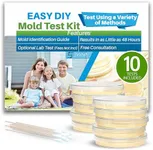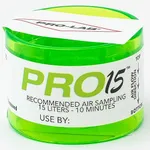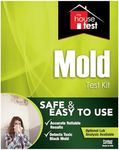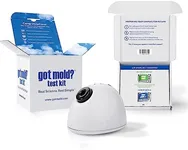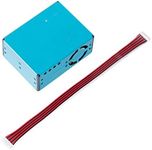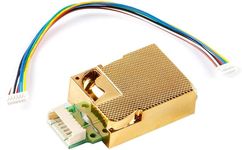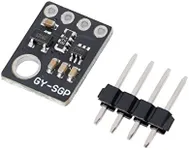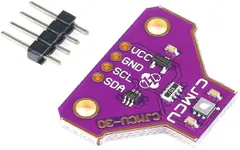Buying Guide for the Best Home Mold Detection Kit
Choosing the right home mold detection kit is essential for ensuring the safety and health of your living environment. Mold can cause various health issues, so it's important to detect it early and accurately. When selecting a mold detection kit, consider the following key specifications to ensure you get the best fit for your needs. Understanding these specifications will help you make an informed decision and choose a kit that provides reliable results.Type of TestHome mold detection kits come in different types, such as air sampling, surface sampling, and bulk sampling. Air sampling tests the air quality for mold spores, surface sampling tests specific areas like walls or furniture, and bulk sampling involves testing materials like drywall. The type of test is important because it determines what kind of mold presence you can detect. If you suspect mold in the air, an air sampling kit is best. For visible mold, surface sampling is more appropriate. Choose the type based on where you suspect mold and what you want to test.
Detection MethodDetection methods in mold kits can vary, including petri dish tests, swabs, and instant-read tests. Petri dish tests involve collecting samples and allowing mold to grow in a controlled environment, which can take several days. Swabs are used to collect samples from surfaces and are then sent to a lab for analysis. Instant-read tests provide immediate results but may not be as accurate. The detection method is important because it affects the accuracy and speed of results. If you need quick results, an instant-read test might be suitable. For more detailed analysis, consider a petri dish or swab test.
Lab AnalysisSome mold detection kits include lab analysis, where you send your samples to a professional lab for detailed examination. This can provide more accurate and comprehensive results, including the type of mold and its concentration. Lab analysis is important for those who need precise information about the mold in their home. If you want a thorough understanding of the mold problem, choose a kit that includes lab analysis. If you prefer a quicker, less detailed result, a kit without lab analysis might be sufficient.
Ease of UseThe ease of use of a mold detection kit refers to how simple it is to collect samples and interpret results. Some kits come with clear instructions and are designed for easy handling, while others may be more complex and require careful attention to detail. Ease of use is important because it affects your ability to accurately collect samples and understand the results. If you are not experienced with mold testing, look for a kit that is user-friendly and comes with detailed instructions. For those with more experience, a more complex kit might be acceptable.
Result TimeResult time refers to how long it takes to get results from the mold detection kit. This can range from immediate results with instant-read tests to several days or weeks for lab-analyzed tests. Result time is important because it affects how quickly you can take action to address mold issues. If you need to know immediately whether you have a mold problem, choose a kit with a short result time. If you can wait for more detailed results, a kit with a longer result time and lab analysis might be more appropriate.
SensitivitySensitivity refers to the kit's ability to detect low levels of mold. High sensitivity kits can detect even small amounts of mold, which is important for early detection and prevention of larger problems. Sensitivity is important because it determines how accurately the kit can identify mold presence. If you are concerned about even the smallest amount of mold, choose a high-sensitivity kit. For general detection, a standard sensitivity kit may be sufficient.

